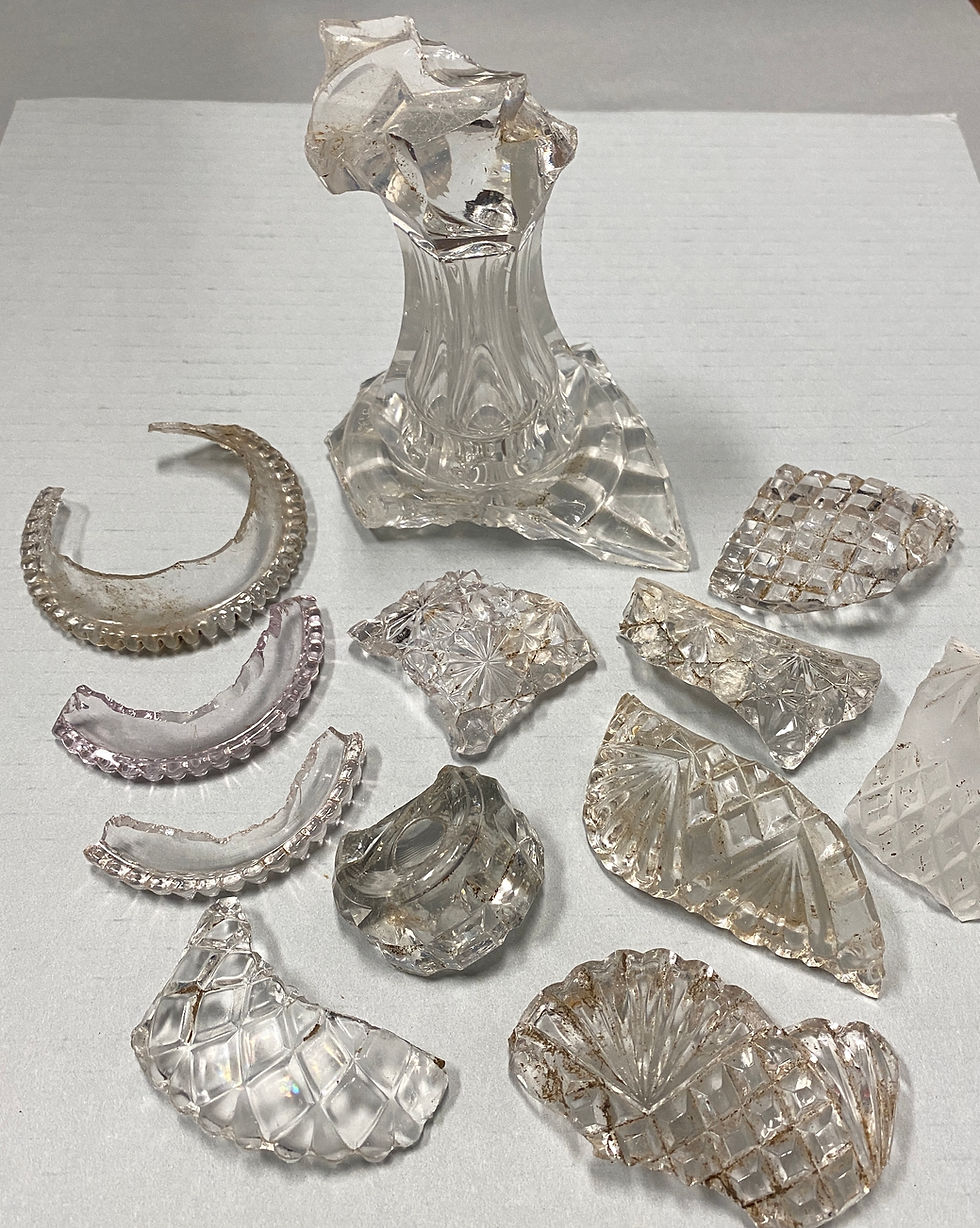Middletown Midden: Finding "Treasures" in 19th-Century Trash
- Joe Zemla

- Mar 29, 2021
- 3 min read
"Anything dirty or dingy or dusty
Anything ragged or rotten or rusty
Yes, I love trash.” — Oscar the Grouch

Late last fall, I took advantage of a few unseasonably warm days to do some digging in an old trash pit located on the property of a mid-19th century estate in Middletown, Monmouth County, NJ. While that admittedly sounds rather odd (and perhaps kind of gross), this particular "junk" was unique. Most of it had been discarded upwards of 150 years ago into a common household midden, or trash heap. Fortunately for me, most of the organic waste had long since decomposed, leaving layers of buried artifacts in the form of glass, ceramics, ironware, bones, plastics, or anything else capable of surviving all these years underground.
Human civilizations have always produced trash. The long and surprisingly fascinating history of refuse disposal is beyond the scope of this blog post, other than two relevant points. The first is that people today produce way more garbage than they did in centuries past. This is primarily due to three things: mass production of disposable items, plastic packaging, and a nearly eightfold population increase worldwide over the past two centuries. In the simplest terms, a lot more people are throwing away a lot more stuff.

This leads to the second point, which is that methods of discarding all of this trash have evolved drastically. Before germ theory was widely accepted, it was not uncommon for people to simply litter the streets with just about all kinds of garbage. In fact it was not until 1866 that the New York City Board of Health was forced to officially forbid "throwing dead animals into the streets."
Municipal waste collection did not even exist until the 1890s or so, prior to which trash was either buried outside in a household or community pit, tossed into the sea, or burned. In some small towns, hundreds or even thousands of hogs at local piggeries consumed garbage by the ton. A sharp spike in mass production and consumerism in the years following World War II paved the way for the more modern system of regulated municipal waste landfills.
Fragments of long-buried 19th century stoneware. Some pieces, such as the example on
right, are attributed to the Van Schoick & Dunn pottery company in Matawan
Municipal waste collection did not even exist until the 1890s or so, prior to which trash was either buried outside in a household or community pit, tossed into the sea, or burned. In some small towns, hundreds or even thousands of hogs at local piggeries consumed garbage by the ton. A sharp spike in mass production and consumerism in the years following World War II paved the way for the modern system of regulated municipal waste landfills.
But no matter how people threw things away, we can learn a lot from what they threw away. Archaeologists, historians, and anthropologists use trash patterns to extract information about material culture, nutrition and disease, economics, consumerism, and cultural trends. Keep this in mind as you browse through this page of images featuring discarded items from 19th century Middletown – as well as the next time you haul your weekly trash out to the curb.
Left to right: Rotary egg beater; metal utensil and lid fragments; flat iron (or "sad iron")
Small medicinal and pharmaceutical bottles with dropper; note the lid of the squared bottle, labeled by hand "Pain in Head"

While most bottles dated late 19th-century, a few were identified as
ca. 1770-1790 spirit bottles
The midden in Middletown revealed hundreds of assorted ceramic shards of various sizes and colors, most imported between 1850-1890

A pair of leather garment strips that have seen better days
"Dr. D Jayne's Expectorant" medicinal bottle, Philadelphia. Dr. Jayne's tonic consisted
largely of ipecac, opium, and digitalis.
Oil lamp burner, stamped "1892," Bridgeport Brass Co.
Deteriorated jar lid from London; bottle cap from Benjamin H. Crate's Bottling Works, Red Bank

Assorted patterns of clear cut glass, an expensive glassware that was indicative of a high social standing in the late 19th-century
Earthenware pieces with identifiable maker's marks. Seen here are pieces from the English potteries Thomas Hughes Ironstone China and John Maddock & Sons Royal Vitreous

Whole (or nearly whole) bottles, found only occasionally amongst thousands of glass shards
Fragments from a jar of Keiller's Dundee Orange Marmalade, a popular spread
originating in Scotland and later produced London

Broken bottle necks of all sizes, shapes, and colors
L to R: P&J Arnold stoneware ink bottle (Denby Pottery, England); Caswell Mack & Co. Chemists cobalt bottle; Udolpho Wolfe's Schiedam Aromatic Schnapps bottle, ca. 1850 J















































